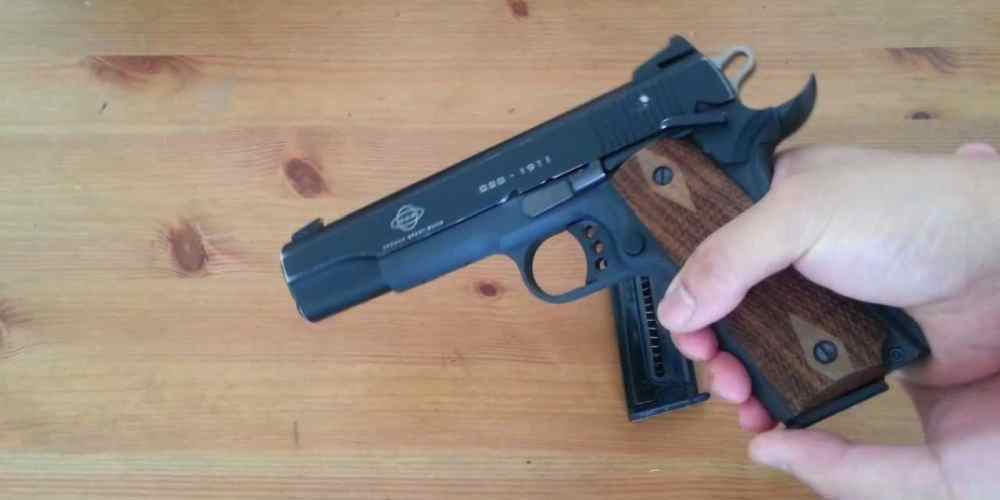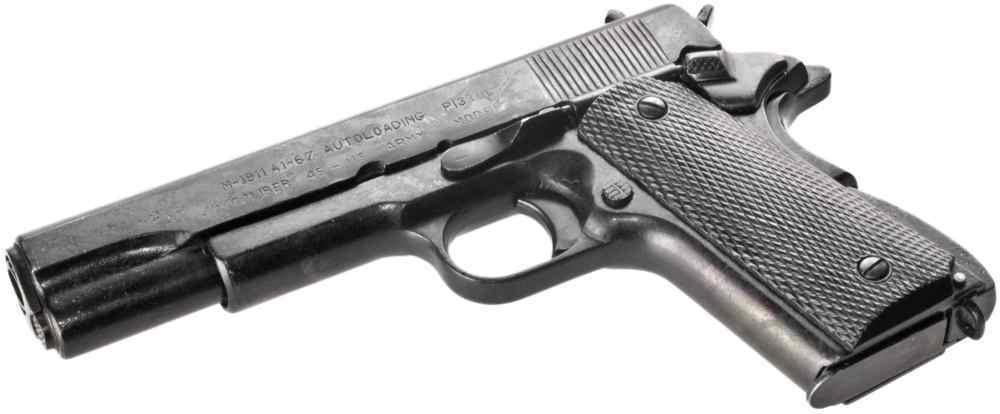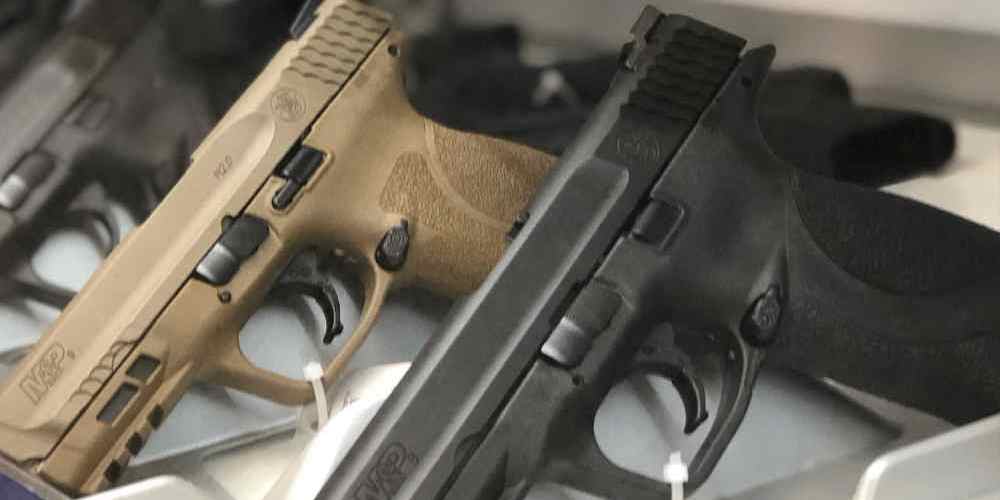“Mastering trigger control for precision and accuracy.”
Proper Finger Placement on the Trigger
When it comes to shooting a semi-automatic pistol, one of the most crucial aspects to master is trigger control. Proper trigger control can make all the difference in your accuracy and precision when firing your weapon. One key component of trigger control is ensuring that your finger is placed correctly on the trigger. In this article, we will discuss the importance of proper finger placement on the trigger and how it can improve your shooting skills.
First and foremost, it is essential to understand that the trigger is the mechanism that fires the gun. When shooting a semi-automatic pistol, your finger should be placed on the trigger in a way that allows you to smoothly and consistently pull it without disturbing your aim. The most common mistake shooters make is placing too much finger on the trigger, which can lead to jerky or uneven trigger pulls.
To ensure proper finger placement on the trigger, you should use the pad of your index finger. This is the area just below the first joint of your finger. Placing your finger on the trigger in this position allows for a smooth and consistent pull, as it provides a stable point of contact with the trigger. Additionally, using the pad of your finger helps to minimize the risk of pulling the trigger to one side or the other, which can cause your shots to veer off target.
Another important aspect of proper finger placement on the trigger is maintaining a consistent grip on the pistol. Your grip should be firm but not overly tight, as this can cause your hand to shake and affect your accuracy. By keeping a consistent grip and using the pad of your finger on the trigger, you can ensure that your shots are precise and on target.
It is also important to remember to keep your finger off the trigger until you are ready to fire. This is a fundamental safety rule that all shooters should follow to prevent accidental discharges. When preparing to shoot, your finger should be indexed along the frame of the pistol, away from the trigger. Only when you are ready to fire should you move your finger onto the trigger and begin your pull.
In addition to proper finger placement, it is essential to practice good trigger discipline. This means being mindful of your trigger finger at all times and only pulling the trigger when you have made a conscious decision to fire. By practicing good trigger discipline, you can avoid unintentional discharges and ensure that your shots are deliberate and controlled.
In conclusion, proper finger placement on the trigger is a critical component of trigger control in semi-automatic pistol shooting. By using the pad of your index finger, maintaining a consistent grip, and practicing good trigger discipline, you can improve your accuracy and precision when firing your weapon. Remember to always keep your finger off the trigger until you are ready to fire and to make each trigger pull deliberate and controlled. With practice and attention to detail, you can master trigger control and become a more skilled and confident shooter.
Maintaining Consistent Pressure
When it comes to shooting a semi-automatic pistol, one of the most crucial aspects to master is trigger control. Trigger control refers to the way in which a shooter manipulates the trigger to fire the gun accurately and consistently. It may seem like a simple concept, but it can make a significant difference in your shooting performance.

One of the key components of trigger control is maintaining consistent pressure on the trigger throughout the entire firing process. This means applying the same amount of pressure from the moment you start pulling the trigger until the gun fires. Any variation in pressure can cause the gun to move slightly, resulting in a missed shot.
To achieve consistent pressure, it’s important to practice proper finger placement on the trigger. Your finger should be positioned on the trigger in such a way that it can apply pressure straight back towards the rear of the gun. Avoid placing too much finger on the trigger, as this can cause the gun to move to the side when you pull the trigger.
Another important aspect of trigger control is the speed at which you pull the trigger. Ideally, you want to pull the trigger smoothly and steadily, without jerking or hesitating. A jerky trigger pull can cause the gun to move off target, while hesitating can lead to a delayed shot. Practice pulling the trigger at a consistent speed to develop muscle memory and improve your shooting accuracy.
It’s also essential to focus on your breathing while practicing trigger control. Proper breathing techniques can help you maintain a steady hand and control your trigger pull. Take a deep breath, exhale halfway, and hold your breath while you pull the trigger. This will help you minimize any movement caused by breathing and improve your shooting consistency.
In addition to finger placement, trigger speed, and breathing, it’s crucial to pay attention to the reset of the trigger. The reset is the point at which the trigger moves forward after firing a shot, allowing you to fire again. By practicing trigger reset, you can reduce the time it takes to fire subsequent shots and improve your overall shooting speed.
To practice trigger control effectively, consider using dry fire drills. Dry firing involves practicing your shooting technique without live ammunition, allowing you to focus solely on trigger control. Set up a safe shooting area, ensure the gun is unloaded, and practice pulling the trigger while maintaining consistent pressure. Dry fire drills can help you identify any flaws in your technique and improve your trigger control skills.
In conclusion, mastering trigger control is essential for achieving accuracy and consistency in semi-automatic pistol shooting. By focusing on maintaining consistent pressure, proper finger placement, trigger speed, breathing techniques, and trigger reset, you can improve your shooting performance and become a more skilled marksman. Practice regularly, pay attention to the details, and strive for perfection in your trigger control to take your shooting to the next level.
Understanding Reset and Follow Through
When it comes to shooting a semi-automatic pistol, one of the most crucial aspects to master is trigger control. Trigger control refers to the way in which a shooter manipulates the trigger to fire the gun accurately and consistently. It is a fundamental skill that can greatly impact your shooting performance.
One key component of trigger control is understanding the concept of trigger reset. Trigger reset is the process by which the trigger is allowed to move forward just enough to reset the firing mechanism without fully releasing the trigger. This allows the shooter to fire subsequent shots more quickly and with greater accuracy.
To properly execute trigger reset, it is important to maintain a steady grip on the pistol and apply consistent pressure to the trigger. As the shot breaks, the shooter should keep the trigger depressed while allowing it to move forward slightly until it resets. This can be felt as a slight click or tactile feedback in the trigger.
By mastering trigger reset, shooters can improve their follow-through, which is another critical aspect of shooting a semi-automatic pistol. Follow-through refers to the shooter’s ability to maintain proper sight alignment and trigger control after the shot breaks. It is essential for ensuring accuracy and consistency in shooting.
To achieve good follow-through, shooters should focus on keeping their sights on target and maintaining a smooth trigger press throughout the firing process. This requires discipline and concentration, as well as a solid understanding of proper shooting fundamentals.
One common mistake that shooters make is anticipating the recoil of the pistol and flinching before the shot breaks. This can cause the shooter to jerk the trigger or pull it to the side, resulting in inaccurate shots. By practicing good trigger control and follow-through, shooters can overcome this tendency and improve their shooting performance.
Another important aspect of trigger control is understanding the difference between single-action and double-action triggers. Single-action triggers require less pressure to fire the gun, while double-action triggers require more pressure. Shooters should adjust their trigger control technique accordingly based on the type of trigger they are using.
In addition to trigger control, shooters should also pay attention to their grip and stance when shooting a semi-automatic pistol. A proper grip and stance can help reduce recoil and improve accuracy, making it easier to maintain control of the pistol during rapid fire.
Overall, mastering trigger control is essential for becoming a proficient shooter with a semi-automatic pistol. By understanding trigger reset, follow-through, and proper shooting fundamentals, shooters can improve their accuracy, consistency, and overall performance on the range. So next time you hit the range, remember to focus on your trigger control and watch your shooting skills improve.
Importance of Trigger Discipline
Trigger control is a critical aspect of shooting accurately with a semi-automatic pistol. It is the act of smoothly pressing the trigger without disturbing the sight alignment, which is essential for hitting your target consistently. Whether you are a beginner or an experienced shooter, mastering trigger control is key to improving your shooting skills.
One of the most common mistakes shooters make is jerking the trigger, which can cause the gun to move off target before the bullet leaves the barrel. This can result in missed shots and frustration for the shooter. To avoid this, it is important to practice proper trigger control techniques.
When shooting a semi-automatic pistol, it is important to place your finger on the trigger in the correct position. Your finger should be placed on the trigger pad, which is the flat part of the trigger, not the tip. This will help you apply even pressure to the trigger, which is essential for a smooth trigger pull.
As you press the trigger, it is important to focus on applying consistent pressure. Avoid jerking or slapping the trigger, as this can cause the gun to move off target. Instead, apply steady pressure to the trigger until the gun fires. This will help you maintain proper sight alignment and increase your chances of hitting your target.
Another important aspect of trigger control is follow-through. After the gun fires, continue to press the trigger all the way to the rear until the gun cycles. This will help you maintain control of the gun and ensure that you are ready to fire again if needed.
Practicing proper trigger control is essential for improving your shooting skills. One way to do this is through dry fire practice. Dry firing is the act of practicing your trigger control without live ammunition. This can help you focus on your technique and make any necessary adjustments without the distraction of recoil.
When practicing trigger control, it is important to focus on the fundamentals. Start by ensuring that your grip is firm and consistent, your stance is stable, and your sight alignment is correct. These fundamentals will help you maintain control of the gun and improve your accuracy.
In addition to dry fire practice, live fire practice is also important for mastering trigger control. Shooting at the range allows you to apply your skills in a realistic setting and receive immediate feedback on your performance. Pay attention to how you are pressing the trigger and make adjustments as needed to improve your accuracy.
Overall, trigger control is a fundamental skill that every shooter should master. By practicing proper trigger control techniques, you can improve your shooting skills and increase your accuracy with a semi-automatic pistol. Remember to focus on placing your finger on the trigger pad, applying consistent pressure, and following through after the shot. With practice and dedication, you can become a more confident and accurate shooter.
Training Drills to Improve Trigger Control
Trigger control is a critical aspect of shooting accurately with a semi-automatic pistol. It is the act of smoothly pressing the trigger without disturbing the sight alignment, which is essential for hitting your target consistently. Many shooters struggle with trigger control, leading to missed shots and frustration on the range. However, with the right training drills, you can improve your trigger control and become a more accurate shooter.
One of the most common mistakes shooters make is jerking the trigger, which can cause the gun to move off target before the bullet leaves the barrel. To combat this, it is essential to practice proper trigger control through dry fire drills. Dry firing involves practicing your trigger pull without live ammunition, allowing you to focus solely on your technique. Start by ensuring your gun is unloaded and pointing in a safe direction. Then, practice pressing the trigger smoothly and steadily, paying attention to any jerking or flinching movements. By practicing this regularly, you can develop a more consistent trigger pull.
Another effective training drill for improving trigger control is the ball and dummy drill. This drill involves loading a mix of live rounds and dummy rounds (which do not fire) into your magazine without looking. As you shoot, pay attention to how you react when you encounter a dummy round. If you flinch or jerk the trigger, it indicates a lack of trigger control. By identifying and correcting these issues, you can improve your trigger control and become a more accurate shooter.
One of the keys to mastering trigger control is understanding the reset point of your pistol’s trigger. The reset point is the distance the trigger must travel forward after firing a shot to reset and be ready to fire again. By practicing trigger reset drills, you can learn to take advantage of this feature and fire more quickly and accurately. After firing a shot, release the trigger just enough to reset it without fully releasing it. This will allow you to fire again without having to release the trigger all the way, reducing the time between shots and improving your accuracy.
Another useful training drill for improving trigger control is the balance drill. This drill involves balancing a coin or small object on the front sight of your pistol while dry firing. By focusing on keeping the object balanced while pressing the trigger, you can develop a smoother and more controlled trigger pull. This drill helps you build muscle memory and improve your trigger control under pressure.
In conclusion, trigger control is a crucial skill for shooting accurately with a semi-automatic pistol. By practicing training drills like dry firing, the ball and dummy drill, trigger reset drills, and the balance drill, you can improve your trigger control and become a more accurate shooter. Remember to focus on pressing the trigger smoothly and steadily, without jerking or flinching. With dedication and practice, you can master trigger control and take your shooting skills to the next level.





